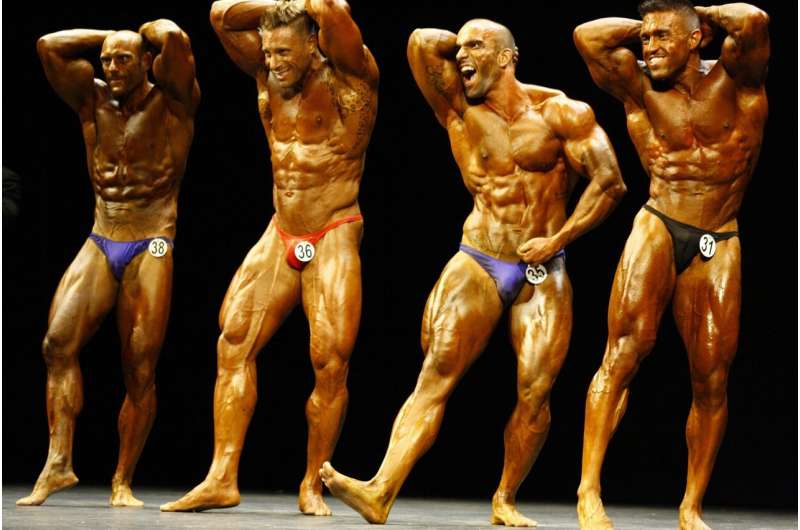The Hidden Struggles: Eating Disorders in the World of Sports

Exploring the hidden struggles of athletes with eating disorders, their impact on health, and the urgent need for cultural change in sports to promote mental well-being and safety.
The United Kingdom is currently grappling with an alarming rise in eating disorders, affecting approximately 1.25 million people. These mental health conditions are particularly dangerous due to their high mortality rate, highlighting the urgent need for early intervention and education.
Within sports communities, however, these issues often remain unseen and unaddressed. Disordered behaviors such as restricting food intake, purging, binge eating, and laxative abuse are frequently normalized or masked as dedication and discipline. Athletes of all genders, ages, and backgrounds—whether amateurs or professionals—can be silently suffering.
Several factors contribute to the development or worsening of eating disorders among athletes. Pressure to perform at high levels, dissatisfaction with one’s body, weight-class restrictions, and cultural ideals of what an athlete's body should resemble create a breeding ground for harmful habits. In some sports, practices like dehydration, extreme weight-cutting, and excessive training are not only accepted but sometimes encouraged.
The tragic consequences of these practices are evident in cases like that of 20-year-old bodybuilder Jodi Vance, who suffered heart failure due to dehydration during contest preparations. Similarly, in combat sports and martial arts, disordered eating is often acknowledged but rarely tackled effectively. Athletes like Paige VanZant and Kay Hansen have openly discussed their struggles with disordered eating, yet many in these sports still dismiss these issues as just 'part of the process.'
Unsafe tactics such as extreme weight loss and dehydration are often perpetuated by coaches who sometimes make harmful jokes or fat-shame athletes, especially vulnerable young competitors. Research in UK-based MMA gyms reveals a common pattern where fighters resort to dangerous weight-cutting methods that compromise their health. Witnessing athletes collapse from exhaustion or dehydration, and hearing coaches trivialize eating disorders, underscores the severity of the problem. Many fighters, including the author herself, have experienced disordered eating patterns, such as atypical anorexia, bulimia, and binge eating, fueled by the desire to meet physical standards rather than improve performance.
Disordered eating is not exclusive to specific body types or visible in all athletes. Even those in larger bodies may suffer from these conditions, making it impossible to judge health solely by appearance. Prominent athletes like footballer Katrina Gorry, cricketer Freddy Flintoff, and cyclist Davide Cimolai have publicly shared their struggles, revealing how pervasive these issues are across disciplines.
The mental health ramifications persist well beyond athletic careers; the author continues to grapple with disordered thoughts related to food and body image despite competing at elite levels in American football and Australian rules football.
Recent policy changes aim to curb dangerous practices. For instance, in MMA, regulations now prohibit extreme weight-cutting techniques such as IV rehydration. British Gymnastics has banned coaches from weighing athletes, addressing a major source of body image pressure. However, systemic power imbalances remain, with coaches wielding considerable influence over athletes’ well-being.
Creating safer sports environments requires better training for coaches to recognize early signs of disordered behaviors, promoting a culture that prioritizes mental health over aesthetics, and establishing clear pathways for athletes to seek help. Education, awareness, and policy reforms are critical to shifting cultural norms from valuing perfection to supporting sustainable health and performance.
Recovery is possible, but prevention through empathy, education, and early intervention is essential—saving lives and fostering resilience. Sport should be a space for growth, strength, and confidence, not hidden harm.
For those affected or concerned about eating disorders, resources are available through support organizations like BEAT. Addressing these issues openly can help dismantle stigma and promote healthier sporting environments.
Stay Updated with Mia's Feed
Get the latest health & wellness insights delivered straight to your inbox.
Related Articles
Creative Play Sessions Prescribed Socially to Help Reduce Postnatal Depression and Improve Parental Well-Being
Research shows that socially prescribed creative play programs for new parents boost mental health, reduce postnatal depression, and foster community support, offering a promising approach to parental well-being.
Psychological Interventions Induce Brain Changes That Reduce Chronic Pain
Recent research shows that psychological treatments can induce physical changes in the brain, helping to reduce chronic pain and improve quality of life. Learn how therapies like CBT influence brain networks involved in pain processing.
Collaborative Approach Key to Tackling Childhood Anxiety and Depression
Research highlights the effectiveness of family-centered therapies like BEST-F in reducing childhood anxiety and depression by involving parents and caregivers, promoting lasting emotional health improvements.
Rethinking the Advice: Should Couples Never Go to Bed Angry?
Challenging the traditional advice, experts suggest that couples reconsider the idea that they should never go to bed angry. Strategic pauses and healthy communication can strengthen relationships.



